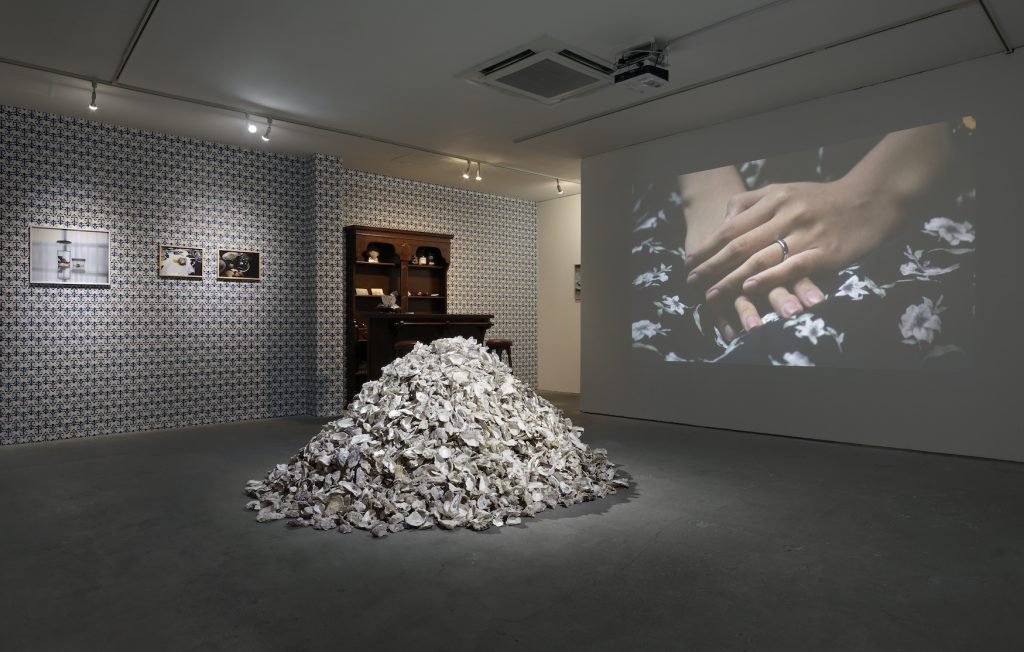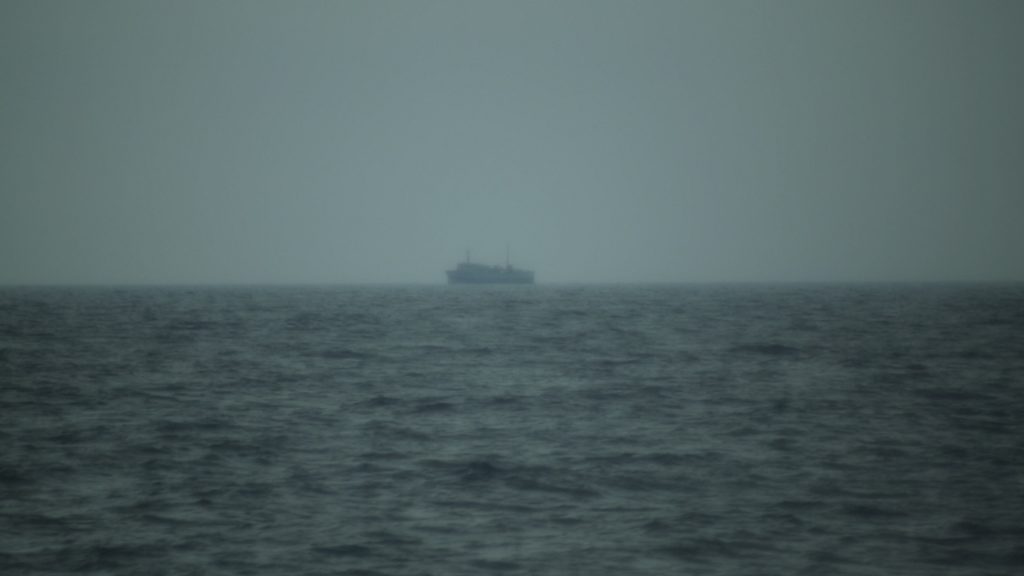Single-channel video (color, sound)
20 min. 20 sec.
The title “Bivalvia” is taken from Latin scientific name of “bivalves” classified by Carl von Linné (1707-78) who is known as the father of modern taxonomy. While walking on the beach in Galicia, Spain, Araki found a shell of European flat oyster and was fascinated by it. He found out that the ruggedness of a shell, which formed over a long period of time, is called “sculpture.” At a local restaurant, he observed people consuming vast amount of fresh oysters, piling up the shells on their plates, and was overwhelmed by the sense of “vanitas*.” He explored how people have strong preference on eating oysters raw, which taken as aphrodisiac in the Occident since the ancient times. During his research, he learned that oyster in Spanish, “ostra” is originated from “bone” in Greek and the word “oyster” has association with “taciturn.” He also paid attention to the Chinese character “唄 (song)**,” a combination of symbol for “mouth” and “shell” which led him to the conception of “Bivalvia” as an opera of reincarnation surrounding songs, shells and human beings.
When Araki saw the carcass of oysters, he thought, “I used to think that the flesh is the symbol of ‘life’ but for shellfish it is ‘death’ as the flesh are to be eaten. The way I see now is that the remaining shells may be symbolizing ‘life’.” Moreover, he points out that “it’s only those who are left behind can cover the dead” and thus choosing shells as his central motif. In this video work, he attempts to tell a story focused on “the rim (shell) and surface (sculpture)” and using “cavity of bivalves” as a metaphor.




